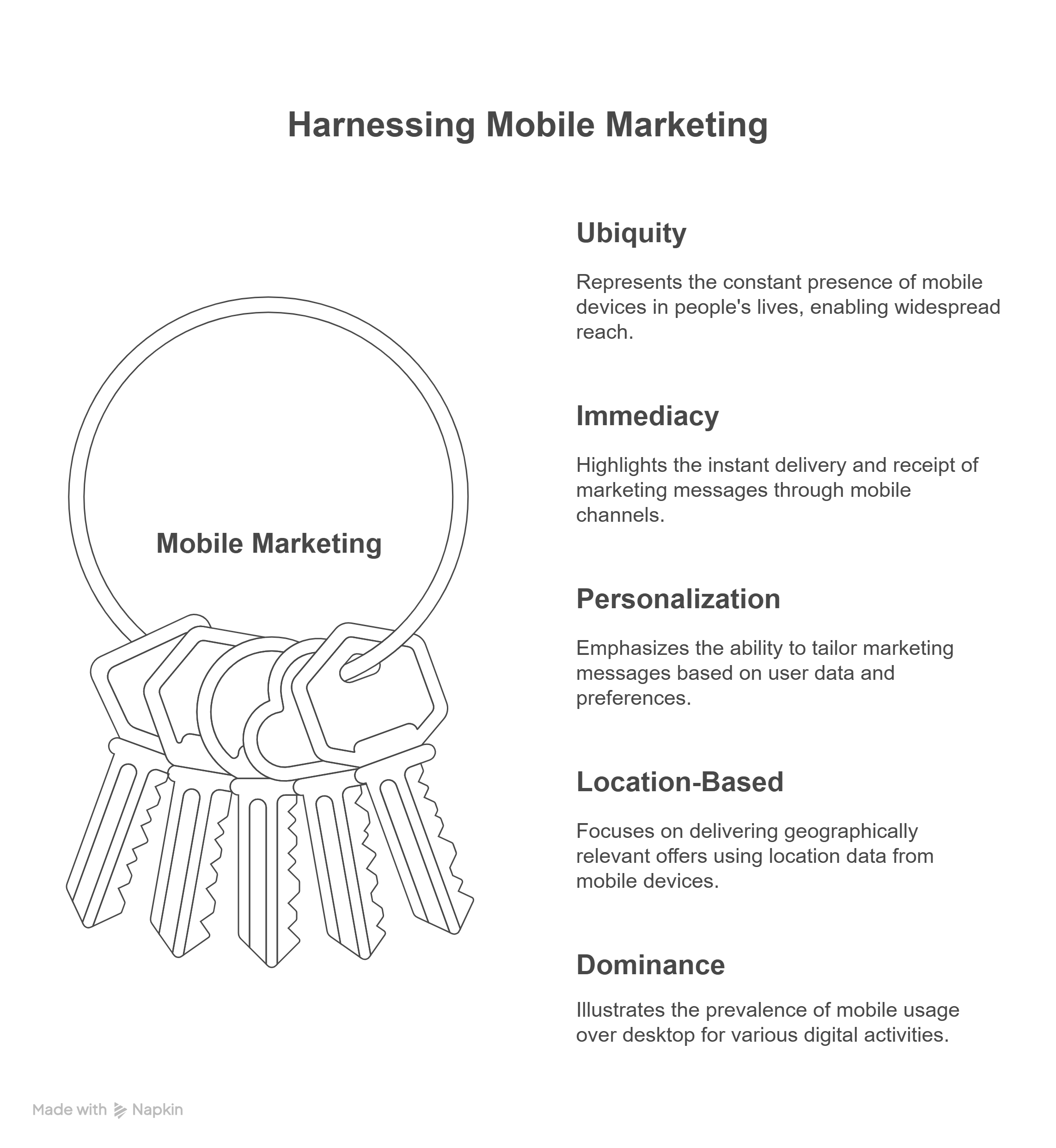Basics of Mobile Marketing - Introduction
Definition:
Mobile marketing is a digital marketing strategy focused on reaching people directly on their mobile devices (smartphones, tablets). It uses various channels like mobile-friendly websites, email optimized for mobile, SMS/MMS messages, social media apps, dedicated mobile apps, and more to deliver marketing messages.
Why It Matters:
Mobile devices have fundamentally changed how people consume information and interact with brands. Mobile marketing is crucial because:
-
📱 Ubiquity: People carry their mobile devices almost everywhere, all the time. This provides constant potential access.
- Example: You can reach someone waiting in line for coffee via a notification, unlike trying to reach them via a desktop computer.
-
⚡ Immediacy: Messages (like SMS alerts or push notifications) can be delivered and seen almost instantly.
- Example: A flash sale announcement sent via SMS is likely seen within minutes.
-
👤 Personalization: Mobile usage generates data (app usage, location, preferences) allowing for highly tailored marketing messages.
- Example: A shopping app sending a notification about a price drop on an item you previously viewed.
-
📍 Location-Based: Mobile devices know the user's location, enabling geographically relevant offers and information (geotargeting).
- Example: A restaurant sending a push notification about a lunch special when a user who has their app is nearby.
-
📈 Dominance: For many activities (searching, social media, shopping), people now use their mobile devices more than desktop computers. Your marketing must work well on mobile.
- Example: Ensuring your website is easy to navigate and purchase from on a small phone screen, as most customers might access it that way.
Key Mobile Marketing Channels:
These are common ways businesses engage users on mobile:
- Mobile-Optimized Websites: Websites designed to adapt automatically to any screen size (Responsive Design). Essential first step.
- Mobile Search (SEO & SEM): Optimizing your website and ads to appear in search results when people search on their phones (often includes location keywords).
- SMS/MMS Marketing: Sending text (SMS) or multimedia (MMS) messages for promotions, alerts, or confirmations (requires explicit opt-in).
- Mobile Apps: Creating dedicated apps for deeper engagement, loyalty programs, or specific functions, often using Push Notifications for alerts.
- In-App Advertising: Placing ads within other mobile apps that your target audience uses.
- Mobile Social Media: Utilizing social media platforms (which are primarily mobile) for marketing and advertising.
- Location-Based Marketing: Using technology like geofencing (virtual boundaries) or beacons (in-store transmitters) to trigger messages based on physical location.
- QR Codes: Scannable codes that link users directly to websites, app downloads, or special offers via their phone camera.


No Comments